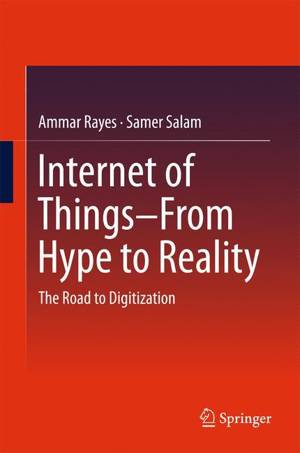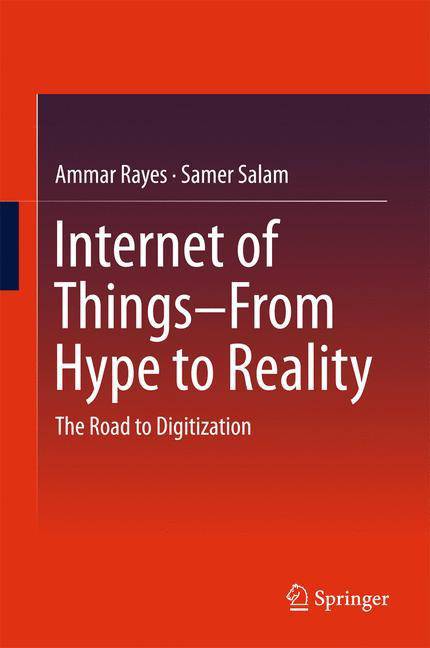
- Retrait en 2 heures
- Assortiment impressionnant
- Paiement sécurisé
- Toujours un magasin près de chez vous
- Retrait gratuit dans votre magasin Club
- 7.000.0000 titres dans notre catalogue
- Payer en toute sécurité
- Toujours un magasin près de chez vous
Internet of Things From Hype to Reality
The Road to Digitization
Ammar Rayes, Samer Salam
Livre relié | Anglais
105,59 €
+ 211 points
Format
Description
This book comprehensively describes an end-to-end Internet of Things (IoT) architecture that is comprised of devices, network, compute, storage, platform, applications along with management and security components. It is organized into five main parts, comprising of a total of 11 chapters. Part I presents a generic IoT reference model to establish a common vocabulary for IoT solutions. This includes a detailed description of the Internet protocol layers and the Things (sensors and actuators) as well as the key business drivers to realize the IoT vision. Part II focuses on the IoT requirements that impact networking protocols and provides a layer-by-layer walkthrough of the protocol stack with emphasis on industry progress and key gaps. Part III introduces the concept of Fog computing and describes the drivers for the technology, its constituent elements, and how it relates and differs from Cloud computing. Part IV discusses the IoT services platform, the cornerstone of the solution followed by the Security functions and requirements. Finally, Part V provides a treatment of the topic of connected ecosystems in IoT along with practical applications. It then surveys the latest IoT standards and discusses the pivotal role of open source in IoT.
"Faculty will find well-crafted questions and answers at the end of each chapter, suitable for review and in classroom discussion topics. In addition, the material in the book can be used by engineers and technical leaders looking to gain a deep technical understanding of IoT, as well as by managers and business leaders looking to gain a competitive edge and understand innovation opportunities for the future."
Dr. Jim Spohrer, IBM
"This text provides a very compelling study of the IoT space and achieves a very good balance between engineering/technology focus and business context. As such, it is highly-recommended for anyone interested in this rapidly-expanding field and will have broad appeal to a wide cross-section of readers, i.e., including engineering professionals, business analysts, university students, and professors."
Professor Nasir Ghani, University of South Florida
"Faculty will find well-crafted questions and answers at the end of each chapter, suitable for review and in classroom discussion topics. In addition, the material in the book can be used by engineers and technical leaders looking to gain a deep technical understanding of IoT, as well as by managers and business leaders looking to gain a competitive edge and understand innovation opportunities for the future."
Dr. Jim Spohrer, IBM
"This text provides a very compelling study of the IoT space and achieves a very good balance between engineering/technology focus and business context. As such, it is highly-recommended for anyone interested in this rapidly-expanding field and will have broad appeal to a wide cross-section of readers, i.e., including engineering professionals, business analysts, university students, and professors."
Professor Nasir Ghani, University of South Florida
Spécifications
Parties prenantes
- Auteur(s) :
- Editeur:
Contenu
- Nombre de pages :
- 328
- Langue:
- Anglais
Caractéristiques
- EAN:
- 9783319448589
- Date de parution :
- 22-10-16
- Format:
- Livre relié
- Dimensions :
- 159 mm x 243 mm
- Poids :
- 688 g

Seulement chez Librairie Club
+ 211 points sur votre carte client de Librairie Club
Les avis
Nous publions uniquement les avis qui respectent les conditions requises. Consultez nos conditions pour les avis.






